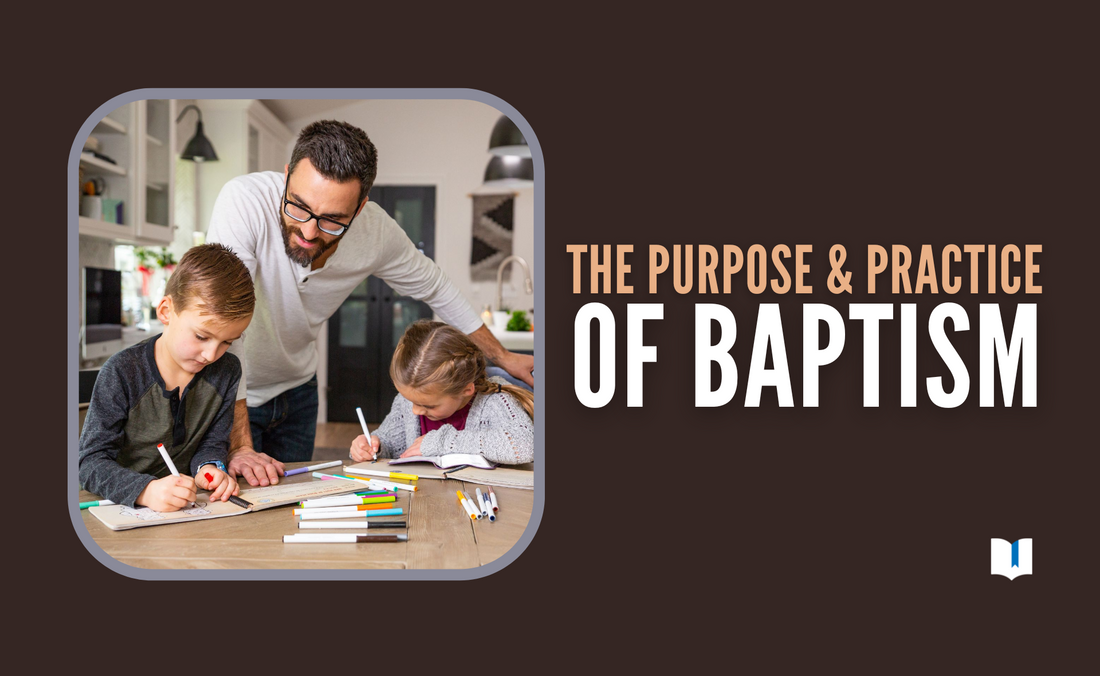
Teaching Kids the Purpose and Practice of Baptism
Share
In our last Life’s Journey article, we gave a general overview of church ordinances and how to instruct children in their biblical foundation and purpose. Now, we will look deeper at baptism, the rule that Christ gave His apostles in His great commission. In Matthew 28:19–20, Jesus said, “Go therefore and make disciples of all the nations, baptizing them in the name of the Father and the Son and the Holy Spirit, teaching them to keep all that I commanded you; and behold, I am with you always, even to the end of the age.” Christ’s commission outlines the church’s mission, and baptism is an essential element in that mission. But how do you instruct children about the meaning and significance of baptism?
One helpful way to educate your children about baptism is by walking them through its practice in the early church in the book of Acts. Your children will learn about the meaning and significance of baptism in many of these historical stories. At the beginning of the book, the apostles baptized all who received Peter’s testimony of Christ and his appeal to be saved (Acts 2:40–41). These, says the text, were added to the church. Throughout the narrative, saving faith is accompanied immediately by baptism and association with the people of God. As the gospel reached Samaria through Philip, all who believed were baptized (8:12). The Ethiopian even petitioned Philip for it (8:36). At Saul’s conversion, he was baptized by Ananias (9:18). When the Gentile house of Cornelius believed and received the Holy Spirit, Peter’s first response was to call for baptism (10:47–48). Lydia, the first convert in Macedonia, received baptism and showed hospitality to the missionaries (16:14–15). Again, in Philippi, the jailer believed with his household and was baptized immediately (16:31–34). As a final example, some Ephesian disciples, who had been identified under John’s baptism, were glad to be baptized into the name of Jesus when they were informed (19:1–7).
Using all of these real-life examples in the early church, you can draw several conclusions about baptism.
- Baptism is the practice of immersing someone in water.
The Greek word we translate, “baptism,” simply means “to immerse,” and the story of Philip and the Ethiopian teaches us total water immersion. After spotting enough water for baptism in the desert, the Ethiopian asked Philip to be immersed in the name of the Father, the Son, and the Holy Spirit.
- Baptism is only for believers.
In each story, each man or woman was only baptized after they professed faith in Jesus Christ for salvation. Church ordinances, including baptism, are not for those who have not committed their lives to trust and obey God through His Son, Jesus Christ. The proper order of the great commission is to make disciples by conversion and then baptize them. Use this truth to teach your children to focus on their hearts before God before considering an external act like baptism.
- Baptism is a public act of identifying yourself with the church.
In Acts 2, all those who were baptized “were added.” They were counted as members of the first church in Jerusalem. Baptism was a public sign to all who saw it that these men and women belonged with those who praised and worshiped Jesus as God. Teach your children that true Christians will always connect themselves to the people of God in the church, and baptism is just one early element of that commitment.
"Water baptism identifies members of the church with one another, establishing bonds of fellowship which extend beyond any other social, cultural or racial barriers (Gal 3:27-28)." From the Adventure Club Teacher Book: The Truth About The Church, The Bible, and the End Times
- Baptism is an act of obedience to Jesus.
In each of these narratives, every believer was commanded to be baptized after he or she was converted. The Ephesian believers had been believers but had not received the Holy Spirit or baptism as Christians. They were immediately baptized in the name of the Trinity, showing that baptism is both an act of obedience and that the only thing required for baptism is genuine faith. Teach your children that once God has granted them faith to believe in Jesus, nothing else is required. They should pursue baptism in their local church under the guidance of the elders and in obedience to Jesus Christ.
Baptism remains a vital part of the church’s purpose because it is the most public identifying mark of a new disciple with the local assembly. Many churches ask new believers to publicly proclaim their testimony and profession of faith in Christ when they are baptized. These can be great opportunities for your children to hear the gospel and see lives transformed by God. As you teach children about baptism from the Scripture and lead them to observe it in the church, pray that God will give them a heart to believe and be baptized in obedience to the Savior.

2 comments
You receive the Holy Spirit by confessing that Jesus is Lord. The Holy Spirit than comes and dwell in You. Ephesians 1:13-14.
Thank you so much for this truth, I agree.
But one question remains:
Regarding Act.19:1-7 and what you said on the forth point : baptism is an act of obedience to Christ; you said that :“The Ephesian believers had been believers but had not received the Holy Spirit and baptism as christians.” Then, what does it mean, it means that everyone who was baptized by John Baptist must be rebaptised in Christ’s time.? Can someone believe before recieving the Holy Spirit? Truly how can we understand this passage ?